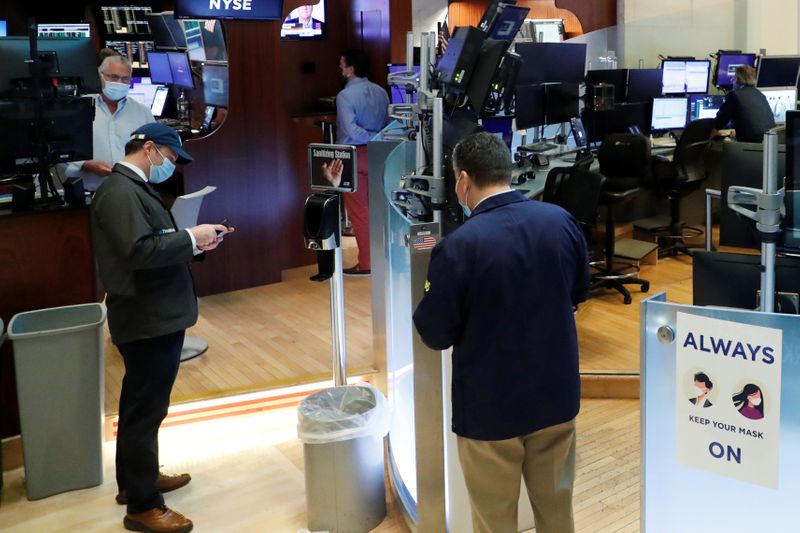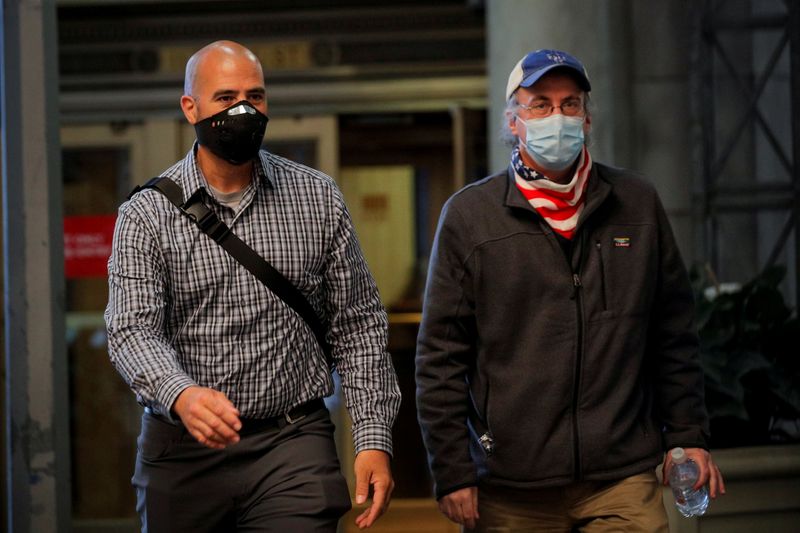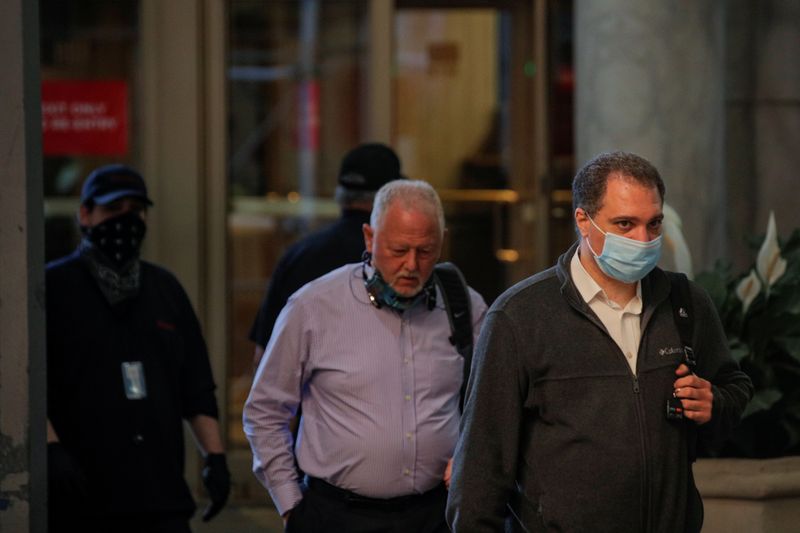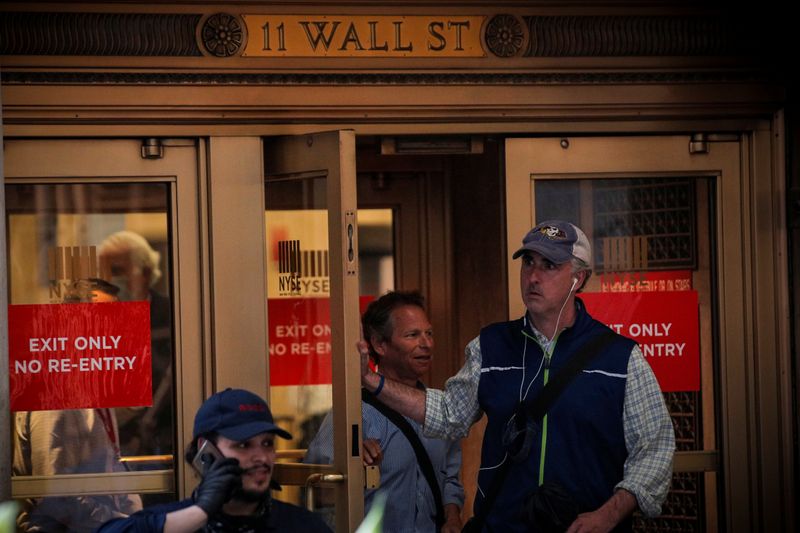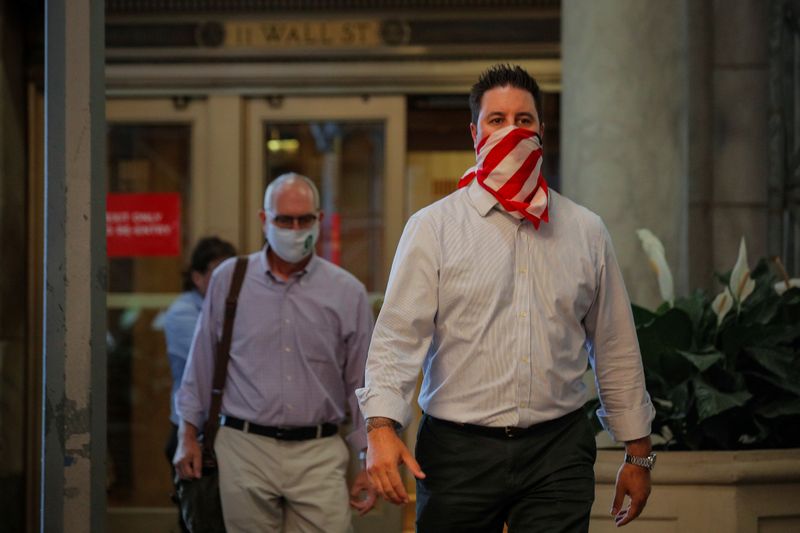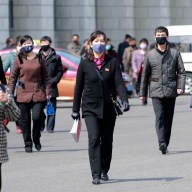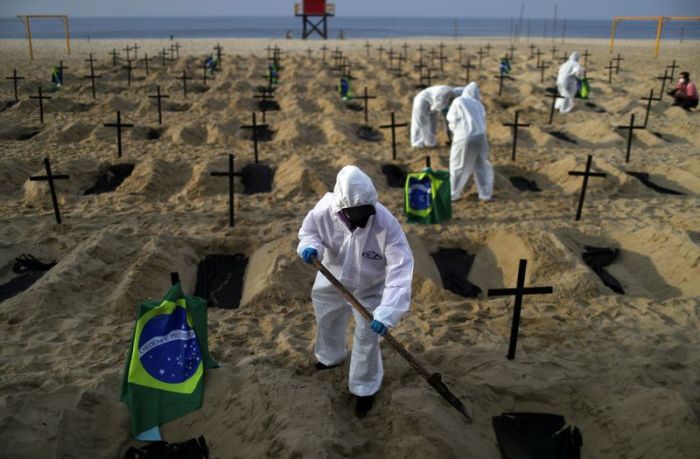NEW YORK (Reuters) – Wall Street plummeted on Thursday as investors reacted to renewed fears of a pandemic resurgence and digested dour economic forecasts from the U.S. Federal Reserve.
All three major U.S. stock indexes lost well over 5%, posting their worst one-day percentage drops since March 16, when markets were sent into freefall by the abrupt economic lockdowns put in place to contain the pandemic. The Nasdaq snapped a three-day streak of record closing highs.
The sell-off was broad, with all 11 major sectors of the S&P 500 falling from nearly 4% to well over 9%.
“There’s really no buy point,” said Paul Nolte, portfolio manager at Kingsview Asset Management in Chicago. “It’s pretty much selling all the way through.”
Tim Ghriskey, chief investment strategist at Inverness Counsel in New York, agreed.
“Everything’s for sale,” Ghriskey added. “There’s fear we’re near a top.”
Deaths of Americans from COVID-19 could reach 200,000 in September, a grim result of the United States’ economic re-opening before getting growth of new cases down to a controllable level, according to a leading health expert.
At the conclusion of its two-day monetary policy meeting on Wednesday, the U.S. Federal Reserve released its first pandemic-era economic outlook, after which Chair Jerome Powell warned of a “long road” to recovery.
“The Fed keeping rates steady through 2022 could give investors the impression that the Fed may be more concerned about the pace of economic recovery than originally anticipated,” said Joseph Sroka, chief investment officer at NovaPoint in Atlanta.
Economic data appeared to back up the Fed’s gloomy economic projections, with jobless claims still more than double their peak during the Great Recession and continuing claims at an astoundingly high 20.9 million.
A year-on-year drop in core producer prices also reflected the central bank’s disinflationary concerns.
The CBOE volatility index <.VIX>, a barometer of investor anxiety, posted its largest one-day point gain since March 16.
The Dow Jones Industrial Average <.DJI> fell 1,861.82 points, or 6.9%, to 25,128.17, the S&P 500 <.SPX> lost 188.04 points, or 5.89%, to 3,002.1 and the Nasdaq Composite <.IXIC> dropped 527.62 points, or 5.27%, to 9,492.73.
Among the major S&P 500 sectors, energy <.SPNY> and financials <.SPSY> suffered the largest percentage drops, plunging by 9.5% and 8.2%, respectively.
Interest rate-sensitive banks <.SPXBK> slipped 9.6%, after the Fed indicated key interest rates would remain near zero through at least 2022.
Travel-related companies, among the hardest hit by mandated lockdowns, were sharply lower.
The S&P 1500 airlines index <.SPCOMAIR> tumbled 13.8%, while Norwegian Cruise Line Holdings Ltd <NCLH.N> and Royal Caribbean Cruises Ltd <RCL.N> dropped 16.5% and 14.3%, respectively.
Boeing Co <BA.N> was the heaviest weight on the Dow, shedding 16.4% after its top supplier Spirit AeroSystems Holdings Inc <SPR.N> announced a 21-day layoff for staff doing production and support work for Boeing’s 737 program.
Declining issues outnumbered advancing ones on the NYSE by a 17.60-to-1 ratio; on Nasdaq, a 12.98-to-1 ratio favored decliners.
The S&P 500 posted four new 52-week highs and no new lows; the Nasdaq Composite recorded 19 new highs and nine new lows.
Volume on U.S. exchanges was 15.31 billion shares, compared with the 12.83 billion average over the last 20 trading days.
(Reporting by Stephen Culp; additional reporting by Sinead Carew; Editing by Cynthia Osterman)

